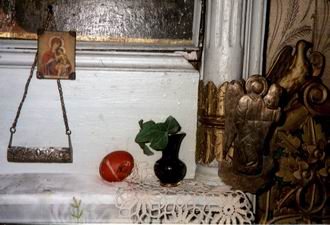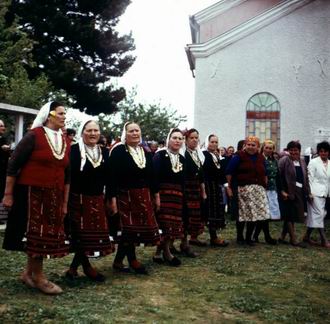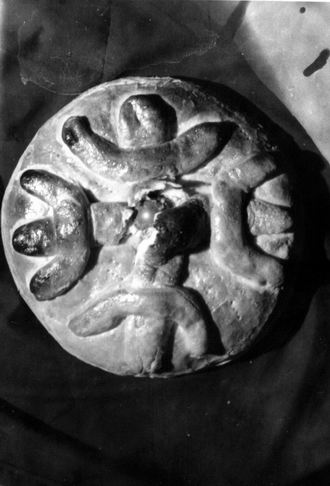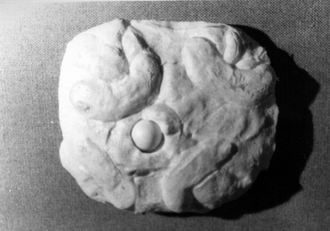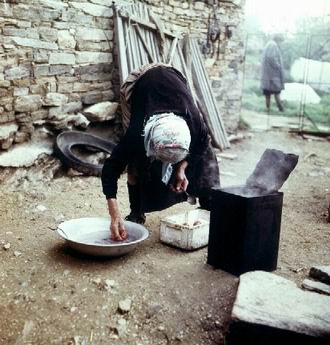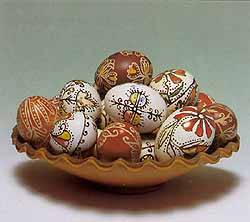Easter or Resurrection of Christ
is the biggest feast for the orthodox Christians. Catholics have bigger respect for Christmas (The Birth of Christ) however. In evangelistic texts it's often mentioned that Jesus Christ foretold multiple times his crucifixion and his Resurrection three days later. And when on the third day since his funeral Marry Magdalene went to the tomb with other women to embalm His body with fragrant oils, according to the ancient Judean tradition, she found it empty. The Resurrection is reason for great feast in the whole Christian world. The events connected to the Resurrection of Christ happened in the days about Jewish Passover. That's why from the beginning the celebrating of Easter is bound to Passover. Because of it's foundations in the moon calendar Passover is a moveable holiday and accordingly Easter changes it's date. An ancient rule sets Easter to be celebrated i a different day than Jews' Passover, but in a Sunday near it, always after the vernal equinox. Since the time of the First ecumenical council in 325 there's a will Easter to be celebrated by all Christians in the same day. Then it was defined the principle, according to which Easter is a feast in the Sunday after the first full moon since the vernal equinox.
What do the variegated eggs symbolize?
Since ancient times many cultures associate the egg with the universe. The Persians for instance believed that the Earth has hatched from a giant egg. In the fourth century consuming eggs during the fasts was forbidden. In spring the hens lay most. Then people started boiling eggs to preserve them for longer. Many nations have seen a symbol of resurrection during spring in the egg. Eggs were painted, decorated and drawn by Romans, Galls, Persians and Chinese. After the genesis of Christianity the egg begun symbolizing the birth of man by nature. In Germany green eggs were eaten on the Thursday before Easter. In Greece initially eggs were painted only in red. In orthodox world eggs are used as a special Easter greeting. People knock with eggs and salute each other with the phrase "Christ resurrected!" In catholic world variegated eggs are hidden from children, who have to find them and that gave birth to Easter eggs' hunt. On the second day of Easter according to West-European tradition eggs are rolled. Kids in Great Britain and Germany play a game rolling eggs against each other or down a hill. The egg which stays whole longest wins and it's owner will be healthy for a whole year. Since 1878 kids in Washington have been invited to roll eggs at the sward in front of the White House. The Faberge's egg is the most popular egg among decorative ones. In 1883 the Russian tsar ordered Peter Faberge to produce a special egg for his wife and he created an egg incrusted with precious stones.
Petia Markova
What's the old Bulgarian canon?
The preparations for the holiday take place during the whole previous week. The Easter eggs are painted usually on Great Thursday or in Saturday. With the first one, painted in red, the oldest woman in the house draws a cross on children's foreheads, so they can be healthy and ruddy during the year. This egg is put in front of an icon, in the chest with the maiden's dowry or it's buried in the center of the field, so it can protect it from hailstorms. On Great Thursday the yeast is being renewed and the dough for the Easter breads is kneaded. They come with many different names across Bulgaria. Usually they're decorated with odd number of red or white eggs with twisted dough around them. The women prepare smaller Easter breads with a single red egg in the middle, which are given to the first guest, the best man, brother-in-law and other relatives. Easter is celebrated for three days. The Sunday morning everybody go to the church for the high mass and come back home with fired candles, saluting each other with "Christ resurrected!".





